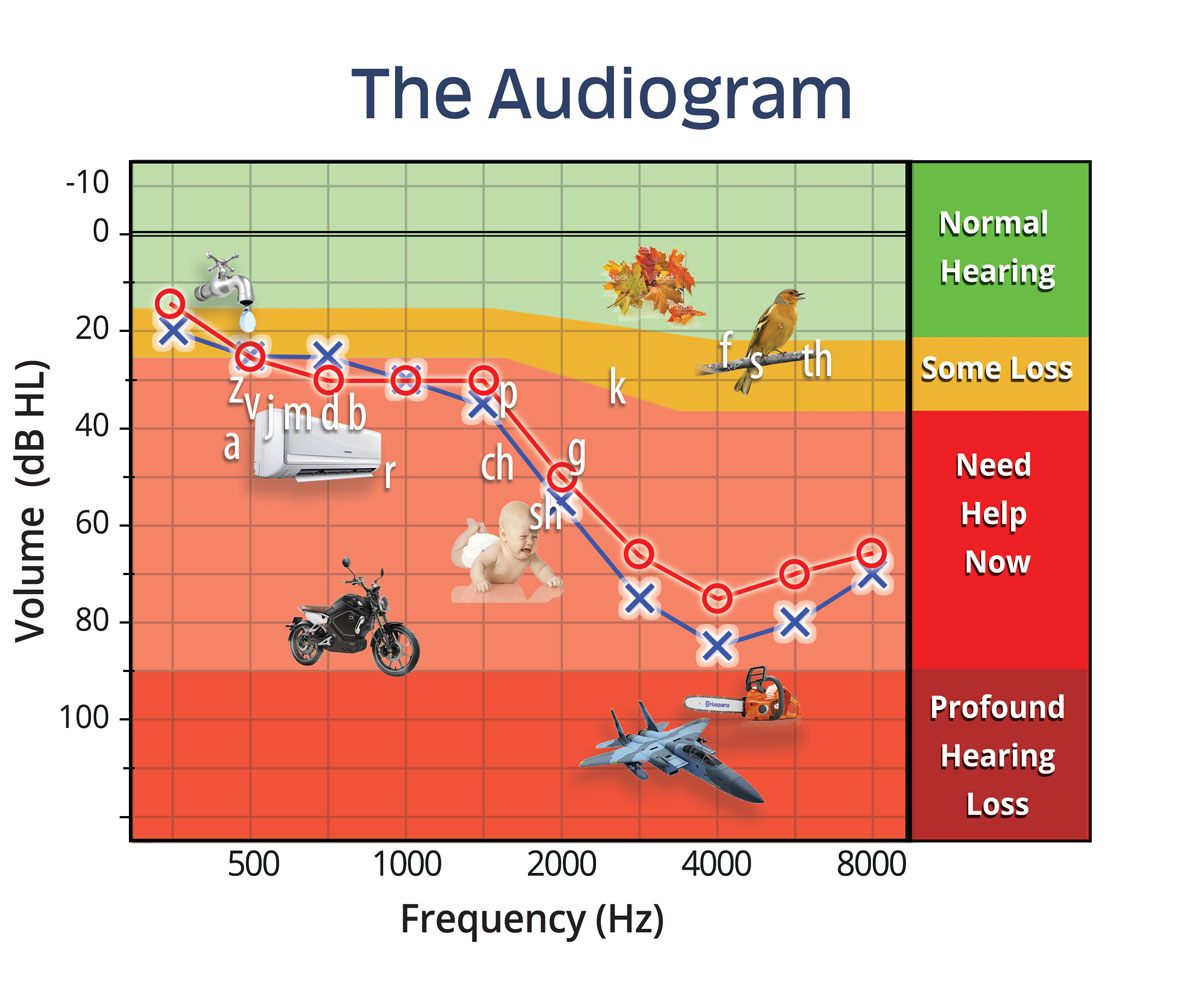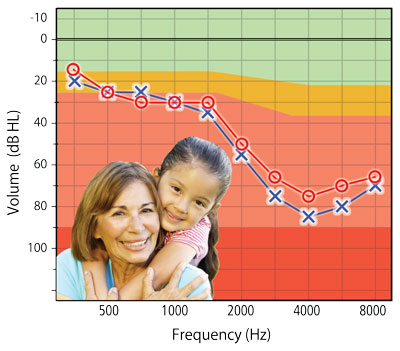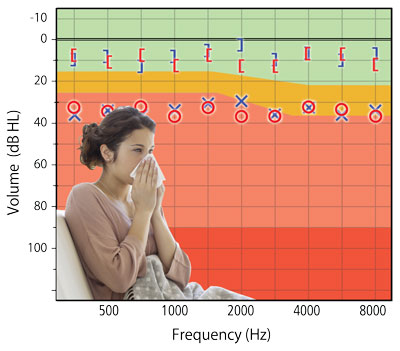Tweed Heads +61 7 5513-0338
Mt Ommaney +61 7 3310-4581
Runaway Bay +61 7 5529-3530
Hyperdome +61 7 5439-0809
Victoria Point +61 7 3207-6247
Mon-Fri, 9AM – 5:30PM
Understanding your Audiogram
Hearing tests are painless, non-invasive, and simply involve sitting in a soundproof booth and listening to tones played at a range of frequencies important to human hearing. The softest sounds you can hear are plotted on a graph called an audiogram. Here we help you to understand your results.

Basics of the Audiogram
Frequency (Hz)
The horizontal axis represents the frequency, or pitch, measured in Hertz (Hz). They are arranged from low-pitched on the left to high-pitched on the right. Each vertical line represents a different frequency being tested.
Volume (dB)
The vertical axis represents the intensity (loudness) of tones that are played during your hearing test, measured in decibels (dB). The softest sounds are at the top of the chart and the loudest sounds are at the bottom.
Hearing thresholds (‘X’ and ‘O’)
The audiogram plots the softest sound that you can hear at each frequency. “X” is used for the left ear and “O” represents scores for the right ear.
Scores are compared to results obtained from persons with normal hearing (i.e. no hearing loss), shown at the 0dB line.
Sometimes the audiogram will also show bracket symbols “[“ and “]”. These represent scores based on bone conduction tests, which bypass the outer ear and middle ear.
Interpreting your results
In the example above, the individual’s audiogram illustrates a severe high-frequency hearing loss, in both ears.
Sounds that appear above the individual’s hearing thresholds, shown by red lines (right ear) and blue lines (left ear), will be inaudible. This includes speech sounds above those thresholds.
This individual will miss important parts of words, making conversations difficult to follow in noisy environments. Many environmental sounds will also be inaudible, such as birds chirping and rustling leaves.
Characteristics of an audiogram
The following characteristics of the audiogram will be used to explain the results of your audiogram.
Degree of hearing loss
Traditionally, the audiology community has described hearing loss using categories such as: ‘normal hearing’, ‘mild hearing loss’, ‘moderate hearing loss’, ‘moderately-severe hearing loss’, ‘severe hearing loss’, and “profound hearing loss”.
However, such terminology can be misleading. Even mild hearing losses can have a significant impact on peoples’ lives. Low frequencies (125 dB - 1000 dB) determine a person’s perception of speech volume, while high frequencies affect speech clarity. High-frequency elements of speech include sounds such as “f”, “ph”, “th”, “s” and “t”. As these sounds are difficult for someone with high-frequency loss to hear, they may often mistake what someone has said.
For this reason, many people with greater losses in the higher frequencies commonly feel that: “I can hear OK – it is just that people sound like they’re mumbling.”
Common Audiograms

Valeria (Proud Grandmother)
Valeria’s hearing loss is related to the aging process, and is known as “Presbycusis”. This is caused by the degeneration of hair receptors within the cochlea.
Before she was fitted with hearing aids, Mary found conversations with her grandchildren particularly difficult – especially at large family gatherings.

Bill (Builder)
Bill has worked as a carpenter for over 40 years and admits to rarely using ear protection for much of that time.
His sharply sloping loss in the higher frequencies can be attributed to damage produced by electrical saws and other equipment that he has used in his job.

Amanda (Accountant)
Amanda’s nasty flu has led to fluid gathering in her middle ear. This is causing a problem with the passing of sound through her middle ear.
This is evidenced by normal hearing scores for bone conduction tests, represented by the “]” and “[“, but impaired air conduction results shown by “X” and “O”.
Request an appointment today!
Australian Audiology Services are here for all of your hearing care needs. Call us today on 1300 864 327, or complete the form below. One of our team will will be in touch as soon as possible to answer your questions, or to schedule an appointment at one of our hearing centres.
